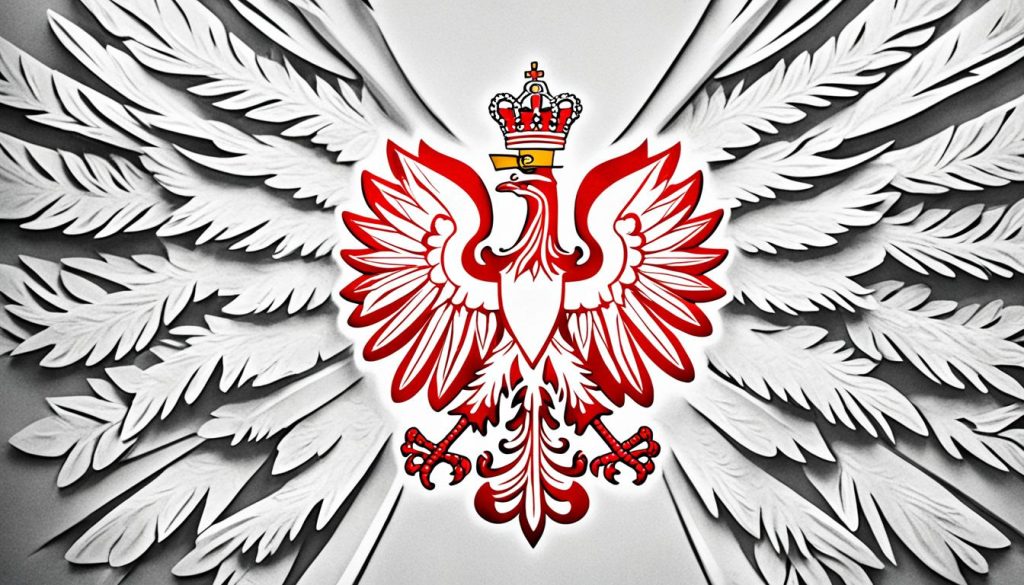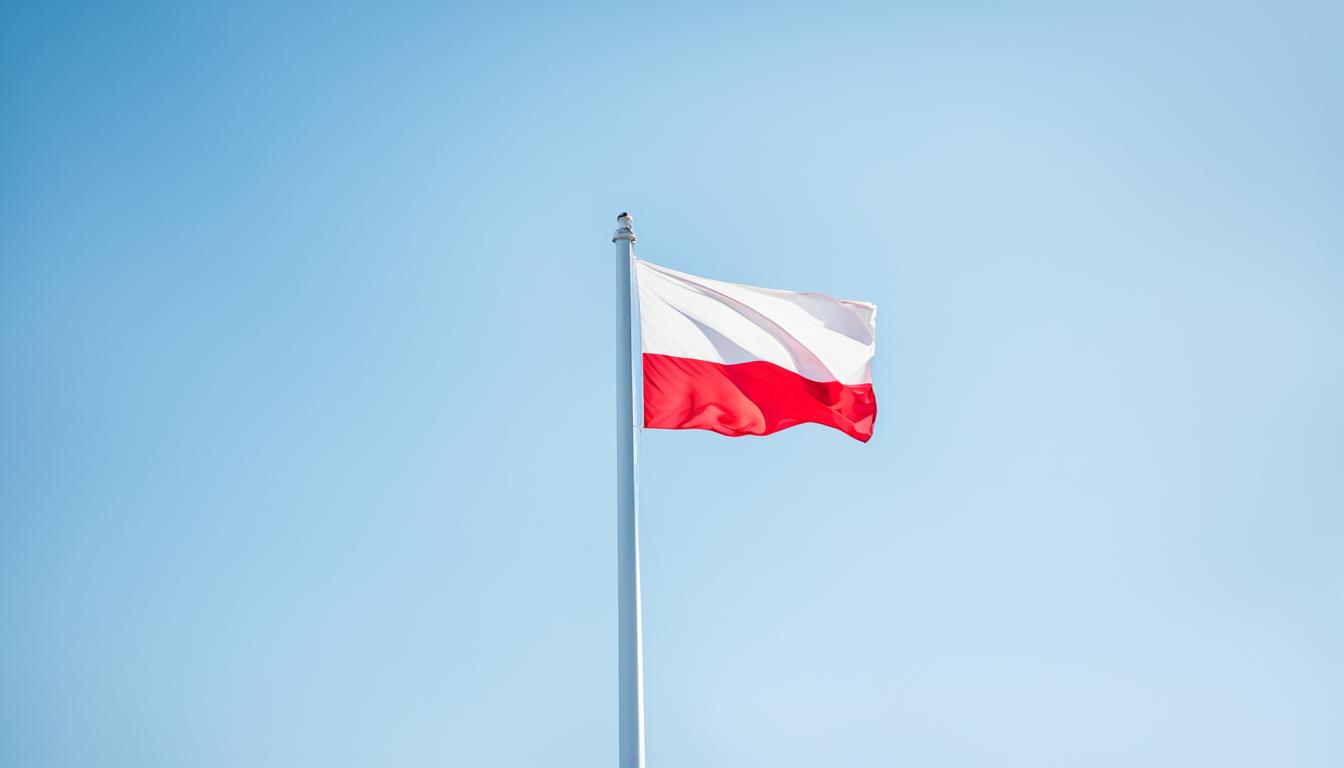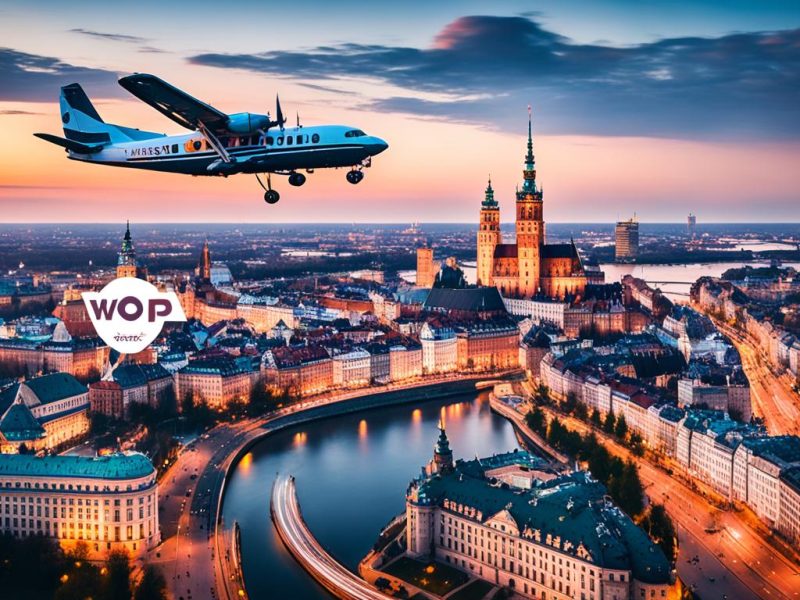The national flag of Poland is a strong cultural symbol. It reflects the history and meaning that matter to the Polish people. The flag’s white and red colors do more than just identify the nation.
They tell a story of the Polish spirit and bravery over the years. Since its start, the flag has seen political changes and societal shifts. It shows the pride and ongoing story of Poles everywhere.
Key Takeaways
- The national flag of Poland is an indelible mark of national pride and historical depth.
- With its simple yet profound white and red flag design, it encapsulates centuries of Polish heritage.
- The colours reflect the enduring Polish cultural symbol and an unwavering sense of belonging.
- As the state flag, it has witnessed and adapted to numerous political and historical transformations.
- The Polish national emblem remains a steadfast symbol of the nation’s resilience and unity.
The Symbolic Nature of the Flag of Poland
The flag of Poland, known as Biel i Czerwień, is more than just a symbol. It shows the nation’s spirit and values. The white and red stripes tell the story of Poland’s history and identity. These colours mean a lot to Poles everywhere, showing their love for the country.
The red and white colours have deep roots in Poland’s history, showing toughness and freedom. The Polish eagle in the coat of arms is white against red. It stands for power and bravery, celebrated in Polish stories and history.
At national festivals, you can see these colours everywhere. They’re in dresses, ribbons, and sports kits, showing Poland’s culture. This shows how deeply Poles feel about their country, beyond politics. The flag brings everyone together, showing they are proud to be Polish.

The Polish flag stands for the country’s achievements and struggles. It’s not just about the colours; it’s how it makes people feel. It shows the proud spirit of Poland.
The flag does not flutter because of the wind that blows it; it flutters with the last breath of each soldier who died protecting it.
We can see how important the flag’s colours are in different parts of Polish life. They’re in history, culture, sports, and patriotic events. They bring people together.
| Aspect | Expression of Red and White |
|---|---|
| Historical | The colours pay homage to the coat of arms and battles depicted in annals of history. |
| Cultural | Celebrations, attire, and artistic portrayals frequently showcase national colours. |
| Sporting | From the grandstands to the uniforms, the flag’s colours unite supporters and athletes alike. |
| Patriotic | The flag is a beacon of solidarity and remembrance during national ceremonies and remembrances. |
In conclusion, the Polish flag’s red and white colours are a deep symbol. They show Poland’s history, identity, and pride. The Biel i Czerwień remind us of Poland’s vibrant past and hopeful future. They’re a symbol of the people’s heart.
The Chronicles of the Flag of Poland
The national flag of Poland carries a deep history, starting in the medieval era. Over time, the flag evolved, becoming a key part of Poland’s identity. This story shows how the flag moved from a medieval emblem to a modern symbol of Poland.
Origins and Early Use
The roots of the Polish flag are in medieval heraldry. The Dąbrowa coat of arms featured a white eagle on red, shaping Poland’s emblem. This early use of the eagle kicked off a national awareness, leading to the flag we see today.
Changes Through the Centuries
In the time of the Polish-Lithuanian Commonwealth, the flag changed with the nation’s history. The flag’s design evolved with the country’s shifting alliances. Every change told part of Poland’s journey towards independence.
When Poland was divided, the flag was a sign of the nation’s fight. Changing the emblem through hard times showed Poland’s strong will. Poland kept its identity alive, even when times were tough.
The Flag during Poland’s Partitions and World Wars
The flag became a symbol of resistance during occupations and wars. Despite being divided and in chaos, the flag united Polish people. World War symbolism made it a symbol of hope for those fighting to keep Poland’s spirit.
Post-War Period to Modern Day
After communism ended, the flag got a new life. Now, events like May 2 Flag Day show its importance in Poland and worldwide. Poland and its people cherish the flag deeply.
The flag tells a story of struggle and success. It’s more than colors and design. It represents Poland’s past, present, and future dreams.
| Period | Description | Symbolism |
|---|---|---|
| Medieval Poland | Introduction of the white eagle emblem | Birth of national consciousness |
| Polish-Lithuanian Commonwealth | Adoption of the two-colour scheme | Promotion of state sovereignty and unity |
| Partitions and World Wars | Flag used secretly as a symbol of resistance | Endurance of national identity under oppression |
| Modern Poland | Restoration and formalisation of flag design | Rebirth of the nation and contemporary symbol of pride |
Conclusion
The national flag of Poland is special to every Pole. It showcases their spirit and perseverance through tough times. The white and red bands are more than colours; they tell a story of struggle and pride. This flag reflects the Polish soul, with each hue representing their rich history and love for independence.
The flag’s design shows the lasting heritage of Poland. It has stayed strong through peace and conflict. The Polish flag reflects the nation’s resilience and pride. It is a symbol of a culture that has survived many challenges. This emblem unites Poles, showing their deep connection to their country.
In the world, the flag shows Poland’s unity and independence. Poles everywhere display it proudly, linking past and future. It symbolises determination and brings people together. The flag looks forward to what Poland and its people can do. It reminds everyone of past victories and inspires hope for the future.
FAQ
What does the white and red flag of Poland represent?
The white and red colours of Poland’s flag stand for the country’s values and history. White symbolises peace and innocence. Red shows bravery and the struggles in Poland’s pursuit of freedom.
What is the history behind the Polish national emblem?
The Polish national emblem stars a white eagle. It started with the medieval Dąbrowa coat of arms. Though it changed over time, it always showed Poland’s freedom and identity.
How has the national flag of Poland evolved over the centuries?
Poland’s flag has changed since medieval times, reflecting its dynamic history. These changes were shaped by significant events. These include the country’s partitions, both World Wars, and the journey to the modern Polish state.
What is the significance of the Polish flag during national celebrations like May 2nd Flag Day?
May 2nd, Flag Day, is key for Poland, highlighting its cultural roots and history. The flag, flown with pride, symbolises unity, national pride, and the heritage of Poland.
Can you explain the historical connection between the Polish flag and the Polish-Lithuanian Commonwealth?
In the Polish-Lithuanian Commonwealth era, the flag was shaped by shared heraldic traditions. It showed the bond between Poland and Lithuania. The flag’s colours and symbols represented the Commonwealth’s identity and sovereignty.
How did the flag of Poland serve as a resistance emblem during occupations?
When Poland was occupied or divided, its flag turned into a secret sign of dissent. Displaying the flag meant Poles could show their true selves and resist the occupiers, despite the risks involved.
What role did the Polish flag play in the post-war restoration of Poland?
After World War II, the Polish flag symbolised the nation’s regained freedom. Its comeback highlighted the renewal of Poland’s identity. It was essential in showing Poland’s role globally once again.
Why are the colours red and white significant in Polish heraldry?
In Polish heraldry, red and white are key as they come from the national coat of arms with a white eagle on a red shield. These colours stand for the courage and honour in Poland’s story.



